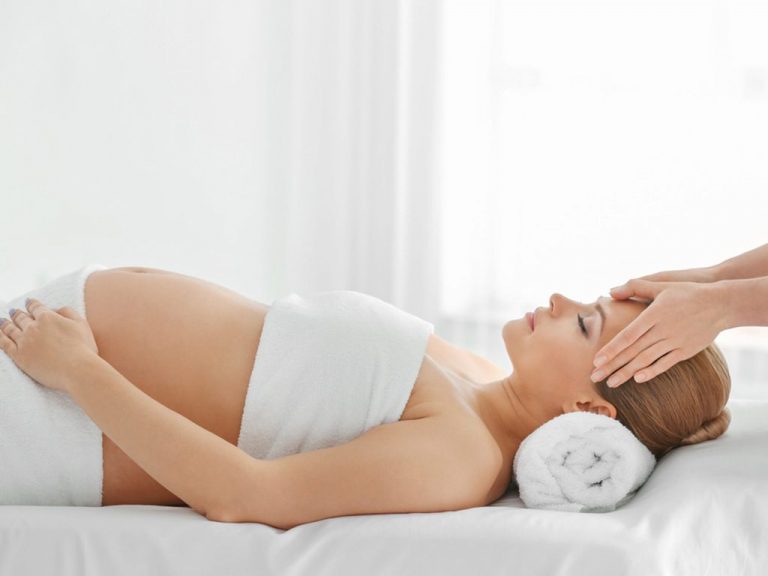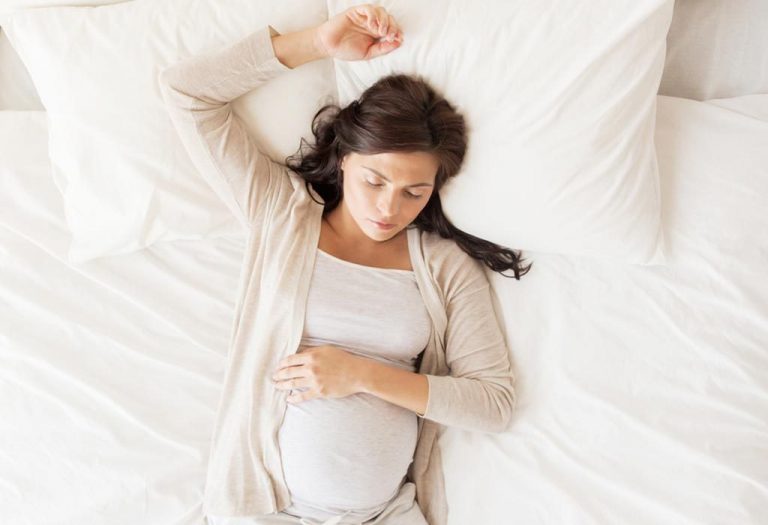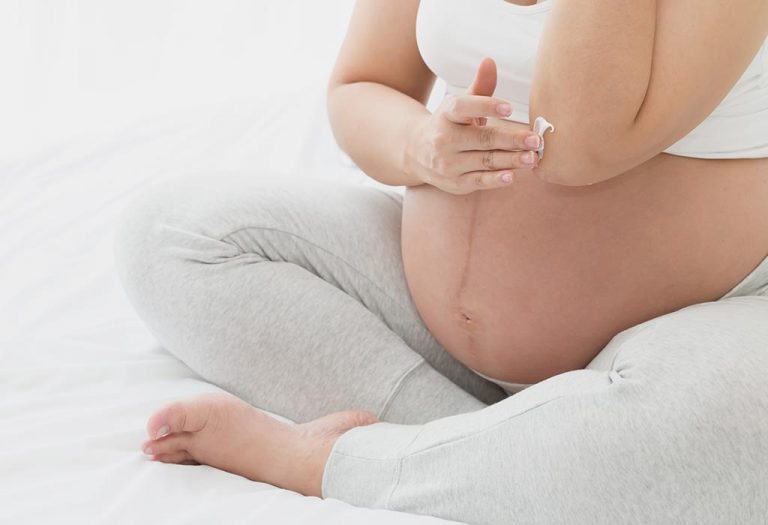Prenatal Massage – Benefits, Precautions & More

While for many, pregnancy is a joyous ride; it can be stressful for some. Whether it is your back screaming in pain or your legs looking for a painkiller, a prenatal massage during pregnancy can be a blessing in disguise in such desperate times. Since pregnancy is a delicate phase for mothers-to-be and unborn babies, proper care must be taken to ensure they remain as stress-free as possible. Massage for pregnant women is a safe and effective way to relieve expecting mothers from physical stress and fatigue. However, it comes with caution as there are some things to remember. Let’s see what those are.
What Is a Prenatal Massage?
A prenatal massage is different from a regular massage. Prenatal massages put light pressure with a gentle touch and more delicate strokes than regular massages that go with a medium to firm pressure. Prenatal massage therapy aims to help a mother relax, work out muscle tension, reduce soreness and improve the lymphatic and blood flow in the body (1). The actual body parts covered may range from foot massages in pregnancy to head massages when pregnant. Prenatal massages are tailored to the common areas of soreness in mothers-to-be and customised towards their needs. The prenatal massages usually last from around 15 minutes to an hour.
In a study, prenatal massage conducted on labour pain by the pregnant women’s partners resulted in women experiencing less pain, and their labours required less need for medication (2).
Prenatal massages must only be carried out by trainers certified in such massages, as there are differences in the massage techniques and areas to focus on in the case of pregnancy massages. For example, pregnancy tends to weaken ligaments, which makes them rather unstable, especially under the application of force. Also, certified trainers know the right spots most affected by pregnancy travails and have clarity on which areas to avoid.
Can You Have a Massage When Pregnant?
There is a misconception that a prenatal massage at the start of the pregnancy harms the fetus’s formation. As a result, many massage centres do not allow pregnancy massages for women in the first trimester of their pregnancy. However, it has been found that the massages do not affect the child in any way (3). Most experts recommend getting these massages throughout pregnancy, as they are beneficial. The usual schedule is to get one every two weeks up to the third trimester and then a massage every week.
However, since there is a high risk of miscarrying in the early trimester of pregnancy, many experts limit or postpone prenatal massages during that time to avoid complications.
Benefits of Massage During Pregnancy
A few of the many benefits of a prenatal massage are listed below (4).
- It helps alleviate stress on the joints, which always bear the weight.
- Prenatal massage reduces stress in the body’s muscles and the associated tendons and ligaments.
- The massage reduces many common discomforts affecting pregnant women, including back pain, foot pain, headaches, leg cramps and joint stiffness.
- It alleviates the risk of heartburn, fatigue, acid reflux, nasal congestion and hip joint pain in mothers.
- It improves blood circulation, which helps increase the strength of immunity and the removal of toxins.
- Prenatal massage reduces the chances of depression, stress, and anxiety by restoring the hormonal balance in the body (5).
- Massage therapy during pregnancy facilitates the release of endorphins in the body, which helps the mother sleep easily and feel more relaxed.
- It increases muscle tone and flexibility, which helps the mother carry the extra weight easily.
- It helps keep the blood pressure in the normal range and reduces the load on the heart.
- Pregnancy massage improves the health of the skin and the underlying tissues.
- It increases the blood flow to the uterus and placenta to help the baby.
- The massage also imparts a sedating effect on the nervous system and facilitates easier delivery of the baby.
Things to Do Before a Massage
As mentioned before, since pregnancy is a delicate affair, anything done or consumed by the mother during this phase must be verified by a healthcare provider. Similarly, prenatal massage during pregnancy has to be done carefully since it directly affects the health of the mother and baby. There are many things to note, depending on whether the massage is done at home or in the clinic. Let’s understand that.
Massaging at Home:
While getting a massage in the comfort of your home, you only need to remember to stay as relaxed as possible. Talk to your expert masseuse, and elaborate on the sore areas as well as areas that do not need much care.
Massaging at the Clinic:
If you plan to get a massage while pregnant from a certified practitioner at a clinic, you first need to get comfortable with the room’s surroundings. You need to have a talk with your practitioner too, and may even be asked to shed all clothing for the massage to happen smoothly.
How to Lie on the Massage Table When Pregnant?
Especially at the later stages of your pregnancy, you should never be lying on your back to get the massage. This can compress the blood vessels running through your back and lower blood pressure. Usually, prenatal massages are done with the mother lying sideways, even if it is an oil massage during pregnancy. However, some tables have deep cut-outs in the belly area, which enable the mother to lie face down comfortably (6). If you have any doubt about the position, do not hesitate to voice your concerns to the expert massage practitioner.
Are There Any Areas to be Avoided During a Massage?
There are not many areas to be avoided during the prenatal massage, except for a few spots in the ankles or palms, as they tend to cause contractions in the uterus. Therefore, it is best to get the opinion of a certified masseuse before proceeding with the prenatal massage.
Precautions for Prenatal Massage
- The most important precaution is to clear the possibility of a massage with your doctor. Discuss any existing medical conditions, and ask your OB/GYN if you are in the right condition to receive the prenatal massage.
- If you are getting the massage from your husband or friends, not an expert, make sure they understand how an oil massage during pregnancy differs from a massage during regular times. Expert-verified educational articles and videos will help immensely. As much as possible, try to have it done by an experienced practitioner itself.
- Do not use any substances you are allergic to in the massage. This is supposed to be a relaxing affair, and more stress or discomfort will not help the mother in any way.
- It is safest to have a prenatal massage while lying on your side. Reason – lying on the stomach or back can risk hypotension (low blood pressure) or unwanted pressure on nerves.
Pregnancy Massage at Home
The best place to get a massage, prenatal or not, is the comfort of your home. However, there are a few things to note before a prenatal massage.
Right Techniques for the Massage
- Back: The massage for the aching back must begin from the nape of the neck and proceed to the hips in a light and steady manner. Any pressure on the spine must be avoided to prevent problems.
- Buttocks: The bone at the base of the spine needs to be massaged softly with a fist and knuckles, while the tailbone area needs to be avoided.
- Legs: Reducing the strain on the legs can be done by stroking the legs in a circular or sideways motion, starting from the foot and moving up to the buttocks.
- Hands and Feet: Muscle soreness is usually not the problem here. Fluid retention, which causes swelling, is the main cause of discomfort. The massage should increase blood circulation and should be done with the thumbs working towards the centre of the body.
- Neck: The stress in the neck muscles can be eased by massaging the shoulders from a wide position using the thumbs.
Tips for the Partner While Giving the Massage
- The atmosphere plays a huge part in helping your wife relax, so make sure to dim the lighting and put on some scented candles of her choice!
- Make sure that your wife is lying in a comfortable position, and use pillows to make her more comfortable.
- If you plan to use any aromatherapy oil, ensure it is expert-safe to use during pregnancy and appropriately diluted. Research has shown a significant reduction in stress and enhanced immune function in pregnant women after aromatherapy massage.
- Use only gentle stroking movements on the body since deep movements can cause pressure, especially in the abdomen area.
- Finally, feedback from the mother is the most important aspect. Understand what makes her comfortable while taking care not to stretch or pressure any uttering ligaments.
Alternatives to Prenatal Massage
There are not many alternatives to a proper prenatal massage. However, some common massage-like practices that can be practised as alternatives include shiatsu techniques or the practice of acupuncture. Acupressure and foot reflexology are alternatives that have similar effects on the mother.
When to Avoid Massages
- Massages need to be avoided when you are experiencing nausea, morning sickness, or bouts of vomiting.
- Pregnant women with a high risk of miscarriage must avoid prenatal massages.
- High-risk pregnant women afflicted with placental abruption or preterm labour must avoid pregnancy massages.
What to Expect After the Massage
After the massage in pregnancy, women experience a deep sleep and an overall relaxed feel. The improved blood circulation and reduced muscle soreness also help them cope with the increased weight better and make them feel rejuvenated and refreshed for extended periods.
FAQs
1. Is it safe to get prenatal massages throughout the entire pregnancy?
While there have been a few reports of massage clinics not performing pregnancy massages on mothers in their first trimester out of the fear of miscarriage, it has been found that these fears do not have any scientific standing whatsoever. A pregnancy massage can be received throughout the pregnancy, with the ideal schedule being one every two weeks until the third trimester and one every week from there on.
2. Can a pregnant woman give a massage to herself?
Pregnant women may not always have people nearby, so they might have to rely on themselves for that massage they crave. However, there are many limitations associated with self-massaging, as many parts are hard to reach on your own. While the feet and arms can be massaged well, it is difficult to reach the neck and back satisfactorily.
For a relaxing belly massage, sit against a couple of pillows on your bed in such a way that your body is at a 45-degree angle, and stroke your belly in motions towards the heart (upwards). Apply lotion/oil as needed. You can also try a head massage with your favourite calming essential oil. Simply rub your temples in a gentle, circular motion, trace along your eyebrows, and return to your temples. This head massage even works as a pre-bedtime ritual.
3. Can prenatal massage help with reducing swelling in the hands and feet during pregnancy?
Yes, prenatal massage can help alleviate swelling, also known as oedema, in the hands and feet. By using gentle, targeted techniques, a trained therapist can improve circulation and lymphatic drainage, which may reduce fluid retention and provide relief from discomfort.
4. Can prenatal massage influence the baby’s position in the womb?
Some specialised massage techniques, such as those used in prenatal chiropractic care or myofascial release, may help create more space in the pelvis and encourage optimal fetal positioning. While prenatal massage alone isn’t guaranteed to change the baby’s position, it can support overall maternal comfort and pelvic alignment, which may indirectly influence the baby’s positioning. Always work with a trained prenatal massage therapist for such techniques.
This was all about pregnancy and massage. The pregnancy massage or prenatal massage can work wonders in making you feel more at ease and comfortable. However, like with every action, massages, too, must be done with care correctly. Make sure you get a massage from a trained individual so that you and your baby can benefit from it.
References/Resources:
1. American Pregnancy Association – Prenatal Massage Therapy
2. National Library of Medicine – Pregnancy and labor massage
4. Cleveland Clinic – Prenatal Massage Benefits and Safety
Also Read:
Back Massage in Pregnancy
Are Spa Treatments Safe when Pregnant?
How to do Perineal Massage in Pregnancy?
How Safe Is It To Use Massage Chairs while Pregnant?
Was This Article Helpful?
Parenting is a huge responsibility, for you as a caregiver, but also for us as a parenting content platform. We understand that and take our responsibility of creating credible content seriously. FirstCry Parenting articles are written and published only after extensive research using factually sound references to deliver quality content that is accurate, validated by experts, and completely reliable. To understand how we go about creating content that is credible, read our editorial policy here.
























